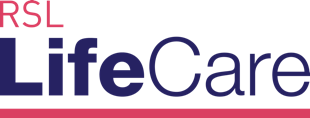The RSL LifeCare Story
RSL LifeCare is a public company limited by guarantee, RSL NSW is the sole member of our charity and our Directors are appointed by RSL NSW. The Directors bring to the table decades of experience in key areas – Veterans, RSL, Aged Care, Retirement Living, Finance, Construction, Business. It all began over a century ago in 1911 at Botany Bay…
First, in 1881 the colony of New South Wales began the construction of a fort on Bare Island near the mouth of Botany Bay to the southeast of Sydney. It was designed to protect the city’s back door from an attack by the Russian navy or another European force. The bulk of the fortification was completed by 1885, however a Royal Commission was conducted in 1890 into the apparently faulty construction through the use of an inferior concrete mix. The commission led to the resignation of the well-known Colonial Architect, James Barnet, who was blamed for failing to properly supervise the work. Bare Island was manned for years, but by 1902 improved weapon technology meant that the artillery on it had largely become obsolete and it was decommissioned.
The fort was located on a windswept island reached via a wooden bridge at the end of a track running down from the tram terminus for the La Perouse line, which was completed in 1902. It was a long way from any real social contact with the rest of Sydney society.
On 18 October 1911 at a meeting at Victoria Barracks, Sydney, a group of men and women formed themselves into a committee to organise a home for ageing ex-soldiers of the British Empire who were living in poverty. The new home would be located in an old fort on Bare Island, Botany Bay, and was simply to be known as “The Veterans Home”. At 3:30pm on 2 July 1912, on the Parade Ground of the Bare Island Barracks, the Governor-General, Lord Denman, officially opened The Veterans’ Home. The local press gave the event favourable coverage and reported that seven residents had been gradually settled into the Barracks.
In order to gain admittance to the Home, applicants were required to have served in the regular naval or military forces of the British Empire before 1 January 1885 (although special cases might also be admitted). They also had to have been a resident of New South Wales, and to present evidence of their honourable discharge from the service and other references as to their good character. They would be expected to help maintain the residence and contribute a weekly sum of 5 shillings (increased to 7 shillings and sixpence by the 1930s) from their pensions. The residents dressed in donated uniforms of a navy blue coat with brass buttons, navy blue pant with a red stripe and a peak cap. They spent time practising their marching and were often in demand as a Guard of Honour on various formal occasions such as ANZAC day, Empire Day and Armistice Day. In 1912 residents only possessed a communal organ in the dining room (owned by the Superintendent), but in the 1920s a piano was added to provide music for themselves as well as for visiting concert performances. Residents during the 1930s were a mixed group consisting of veterans from the Sudan, North-West India, Boer War and Great War plus some who had simply served in the old NSW permanent forces.
From these small beginnings RSL LifeCare has developed over the century to have villages and services throughout NSW and the ACT with retirement living and residential aged care services at Austral (Liverpool), Ballina, Byron Bay, Canberra, Cherrybrook, Dungog, Eden, Galston, Goonellabah, Griffith, Hawks Nest, Lismore, Merimbula, Narrabeen, Narrandera, Nowra, Penrith, Picton, Port Macquarie, Richmond, Tea Gardens, Thirlmere, Toukley, Tura Beach, Wagga Wagga, and Yass. In-home care services are widely available with centres in the far north coast, mid north coast, Sydney, southern highlands, riverina, ACT and the far south coast.
In 2014 RSL LifeCare extended its care for older veterans to young veterans in need of accommodation through our Homes for Heroes service. Sadly, on any given night across Australia, there are many veterans who are homeless. In many ways the Homes for Heroes program is a reflection on the initial impetus for the creation of “The War Vets” back in 1911, when many vets from the Crimean, Boer and Sudan War were homeless on the streets of Sydney. Bereft of support and often with nowhere to turn, these young veterans of their day were given accommodation, treatment and support. And so it is today with our current generation of younger veterans, RSL LifeCare sees his program as a return to its roots.
Download a brochure
We'll never share your email address and you can opt out at any time, we promise

